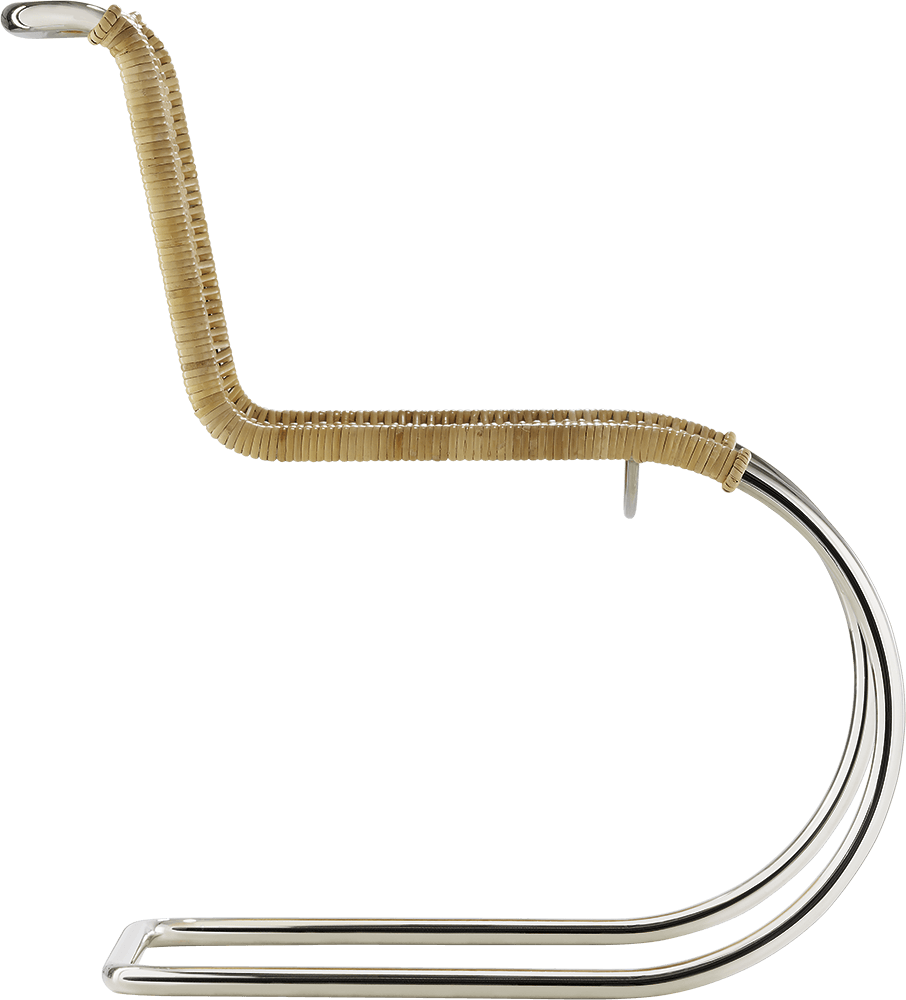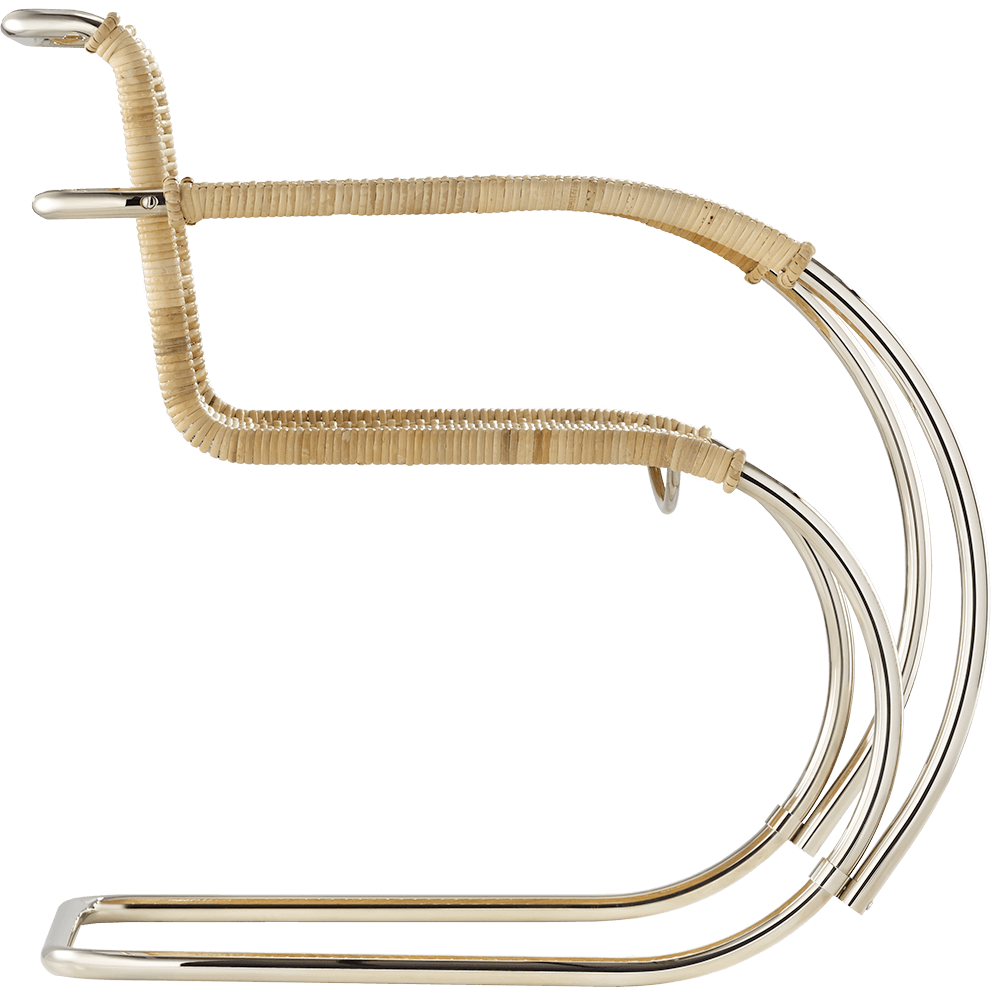
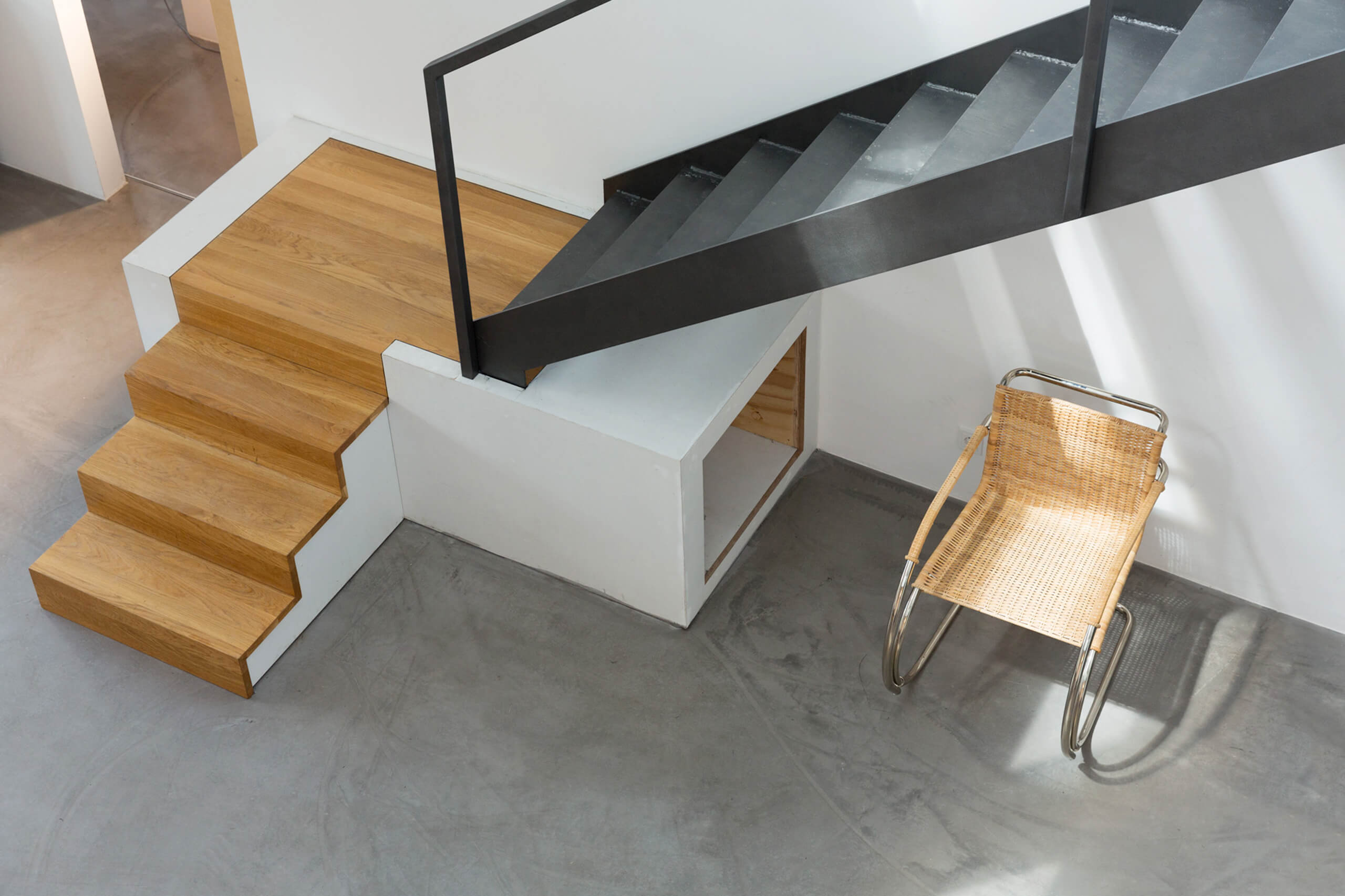
D42
The most beautiful chair of the century
1926 saw the launch of the architectural collective “Der Ring” with members including Walter Gropius and Ludwig Mies van der Rohe. That same year, Ludwig Mies van der Rohe designed the most beautiful chair of the century with a single brushstroke: the Weißenhof Chair. A year later, in 1927, it was displayed at the Weißenhof exhibition in Stuttgart. In 1985 Stefan Wewerka described it as “the most beautiful ‘chair construction’ since the throne of Charlemagne.” The first sketches were influenced by the gas tube chair without hind legs created by the architect Mart Stam. Sergius Ruegenberg reminisced on the birth of the Weißenhof chair in 1985: “Mies returned from Stuttgart in November 1926 and told us about Mart Stam and his chair concept. We had a drawing board on the wall, on which Mies sketched the Stam chair; rectangular, starting from the top.”
+ read more
- einklappen
Ludwig Mies van der Rohe’s verdict on Stam’s chair: ‘Ugly, something really ugly, with these couplings. If he had at least made it rounder – that would have looked better’ – and he drew an arc. Simply an arc in his own hand added to the Stam sketch – that made the new chair.”
Only one thing was missing to complement its extraordinary form: the seat and its covering. That’s where Lilly Reich stepped in – an interior designer, who worked in Ludwig Mies van der Rohe’s office from 1926. She and Mies came up with the idea of using wickerwork for the Weißenhof chair. Together with a master basket maker, Reich developed the new aesthetic that perfected the expansive chair as a holistic work of art.
In 1985 Tecta’s Axel Bruchhäuser analysed Lilly Reich’s creative approach with the help of Sergius Ruegenberg. For him the contrast between the cool steel and warm natural cane was particularly visible at the transition point, marked by a small bulge where the cane wickerwork ends and the steel continues. This is one of the indications that this is an original. Another special feature that can only be found at Tecta today is the double lenticular natural canework out of Indonesian rattan. Since the 1980s, it has been faithfully handmade in Lauenförde by one of the last master weavers and used for the B42 Weißenhof Chair as well as for its counterpart, the D42. The D42 features additional, curved armrests.
Hence, the Weißenhof Chair became one of the most beautiful “chair constructions” of the century, inspiring the artist Stefan Wewerka to write: “As a creator, I declare: two materials could not enter into a connection more pure. As a sculptor, I declare: sculpture could create no space more sublime. As a restless philosopher, I inquire: how could I marry this purity with grace, sensuality, economy and the commonplace utility of the everyday?”
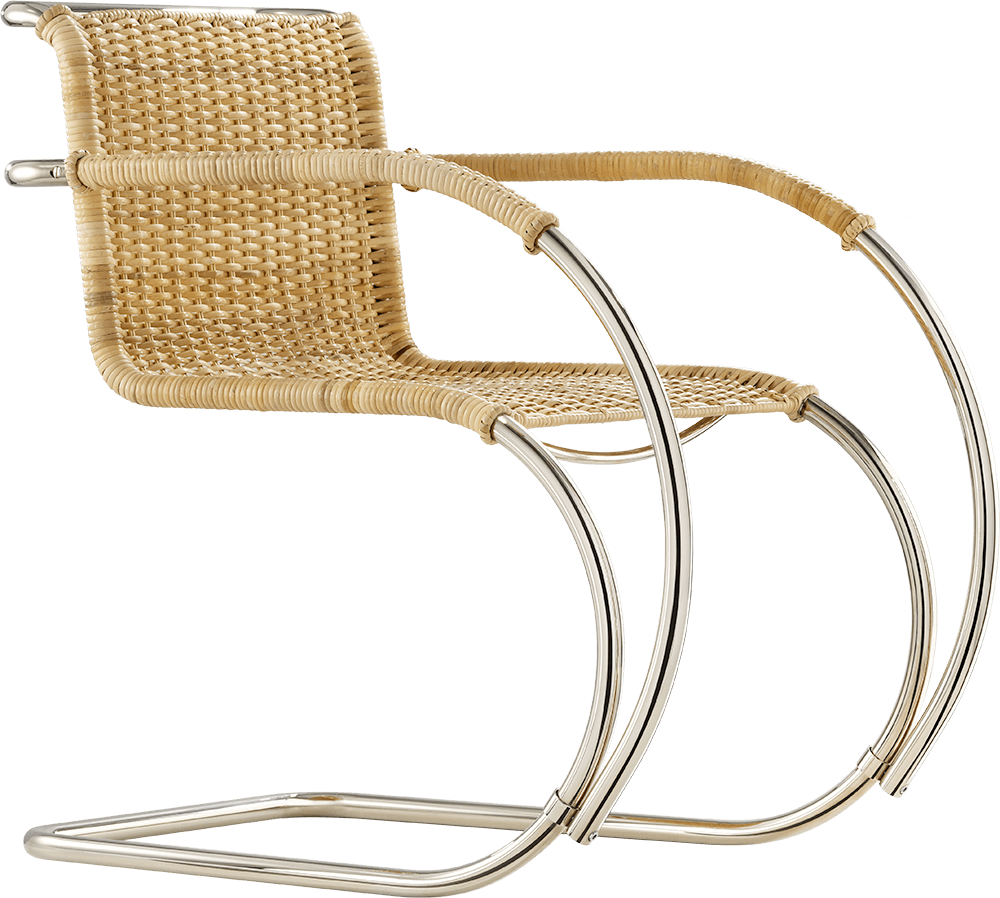

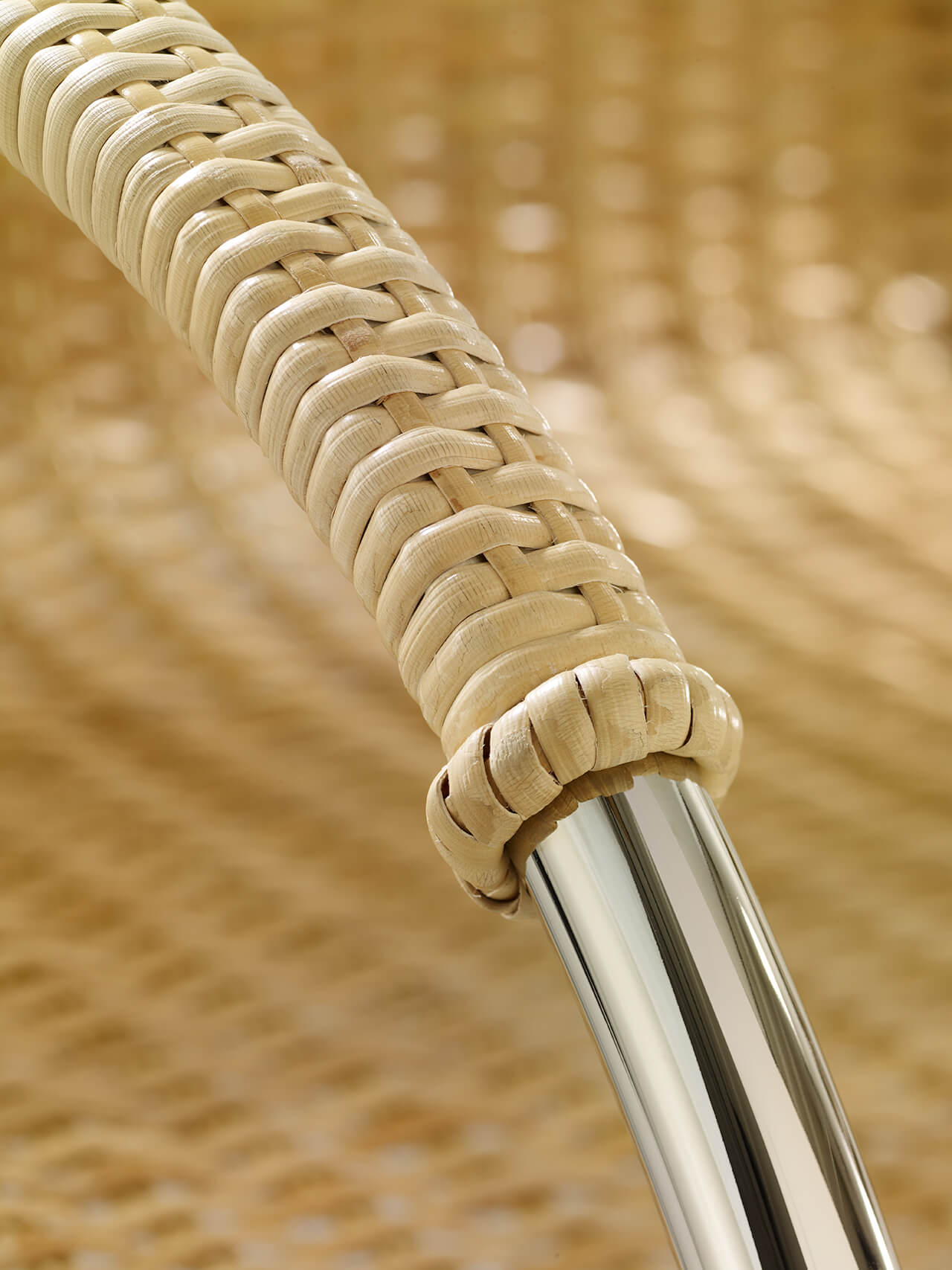
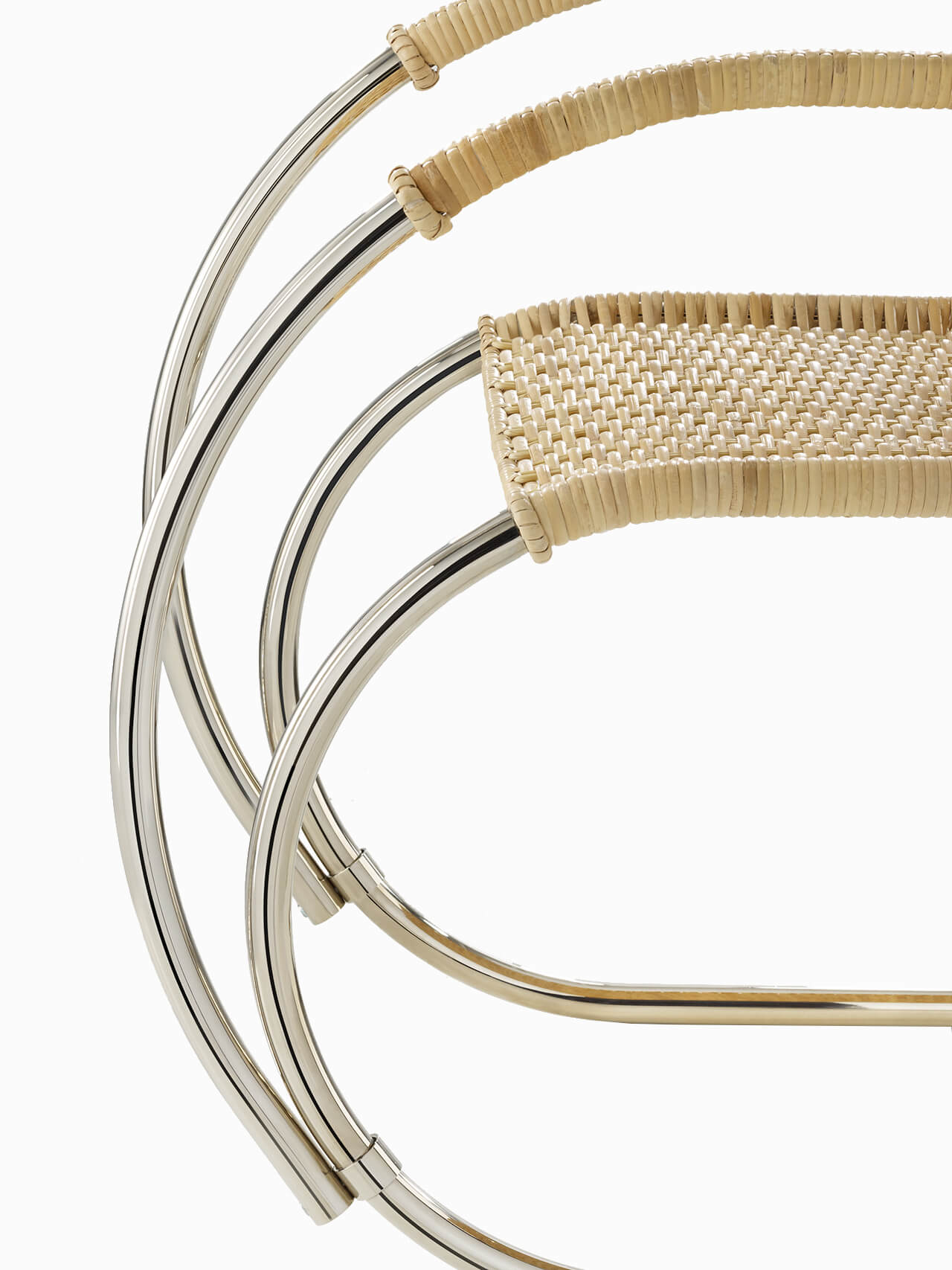
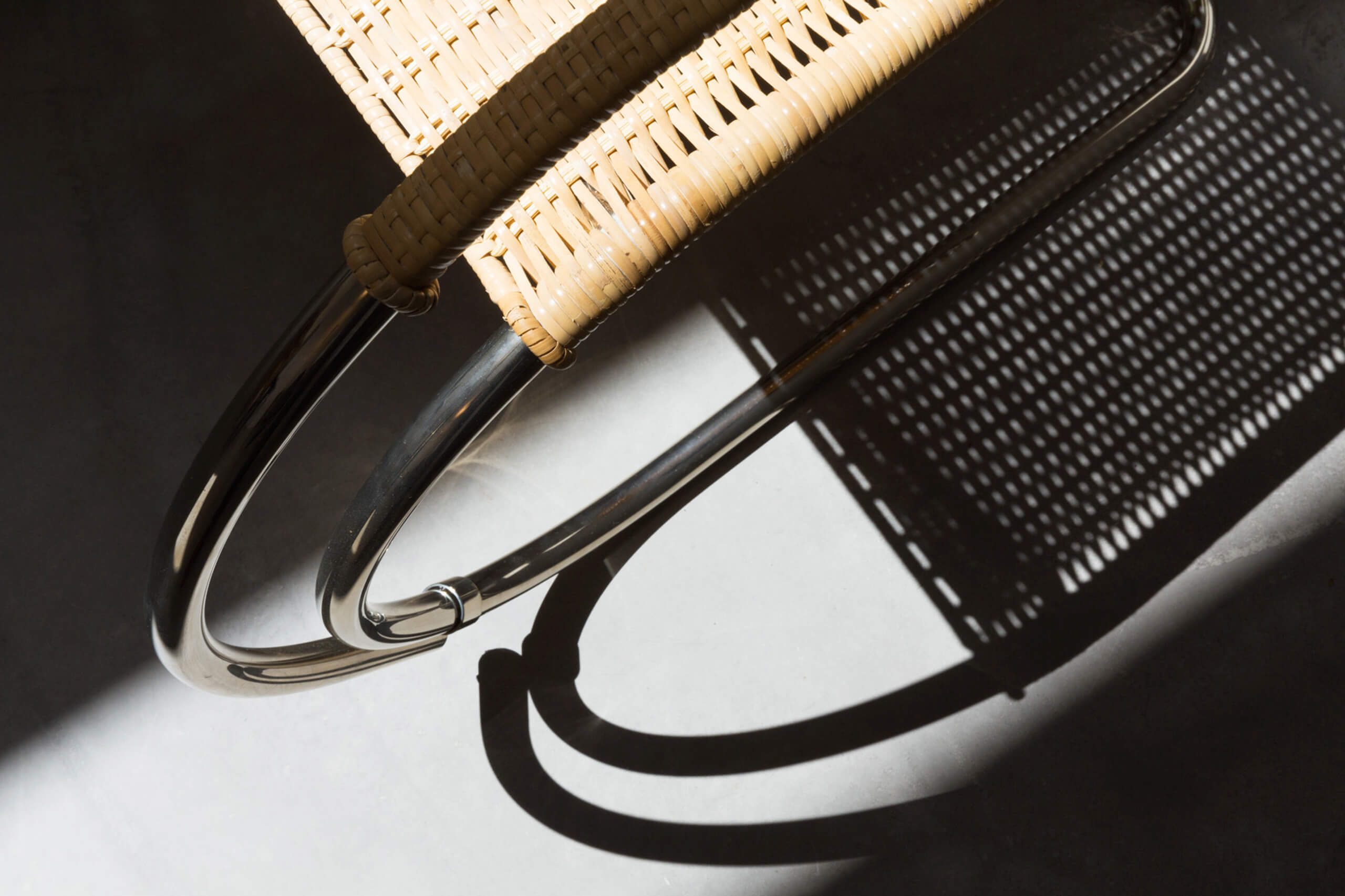
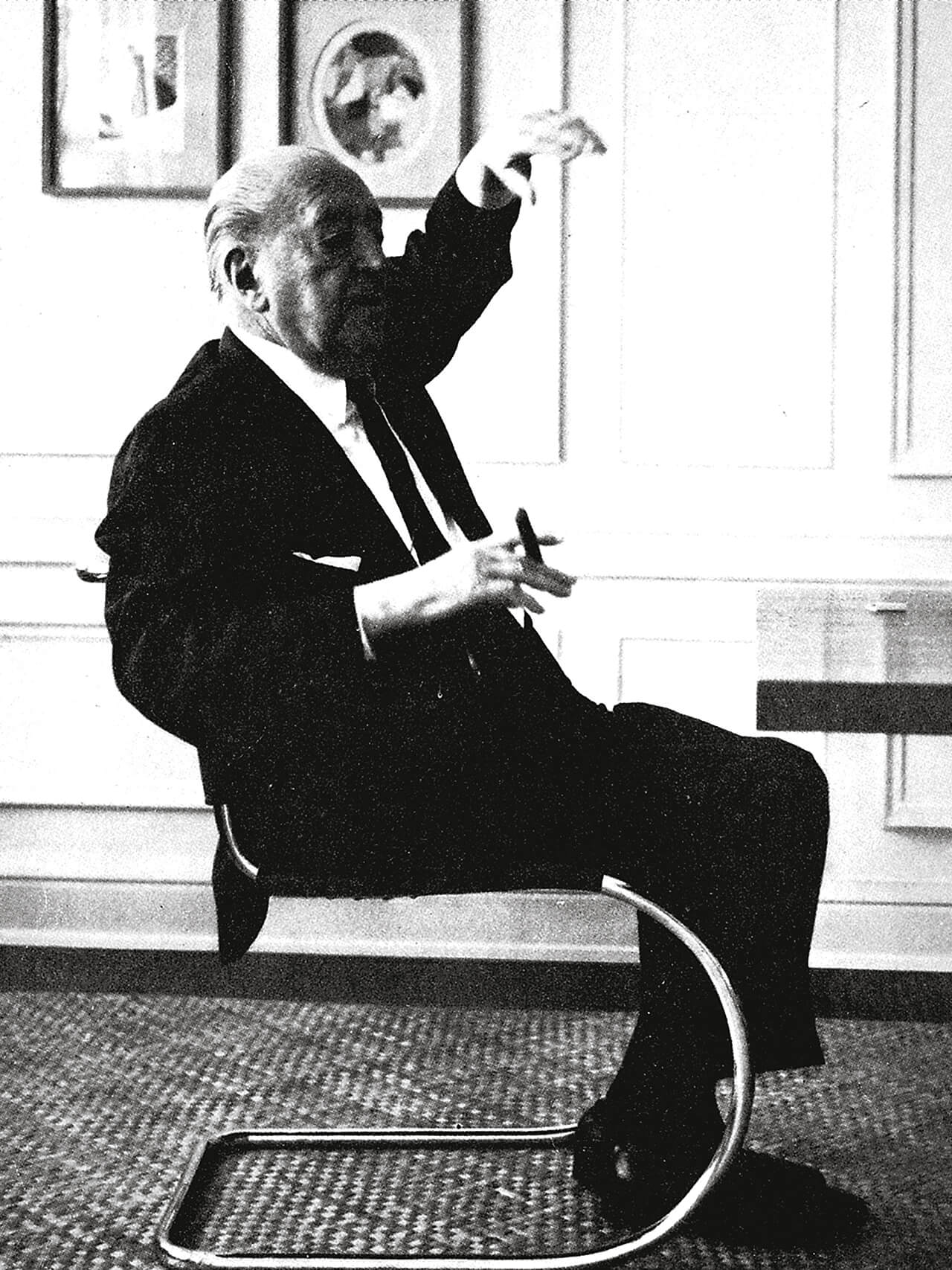
Master of the beautiful form. Born in 1886, as the son of a Catholic stonemason family in Aachen, he is still considered one of the most important architects of modernism today. With a single brushstroke he could make buildings fly and design oscillating furniture. The man who designed the famous Barcelona Pavilion and Villa Tugendhat in Brno, liked to take a midday nap. And Mies van der Rohe’s favourite place for this was his bathroom. This was reported by his contemporary Sergius Ruegenberg, the right hand of Ludwig Mies van der Rohe, the unrivalled master architect.
+ read more
- einklappen
“The art of building is man’s spatial dialogue with his environment and demonstrates how he asserts himself therein and how he masters it,” said Ludwig Mies van der Rohe.
To this day, his understanding of architecture is reflected by his ground-breaking buildings and furniture. “The Miesian city is implicit in the Miesian chair,” commented Peter Smithson.
In 1921, Mies van der Rohe submitted a visionary, but ultimately rejected, design to a skyscraper competition for Friedrichstraße in Berlin, which proposed an almost all-glass façade and was the first testimony to his later “skin and bone” architecture. In 1924 Ludwig Mies van der Rohe followed the invitation to join the Deutscher Werkbund (German Association of Craftsmen). Later, as Vice President, he organised the 1927 Werkbund housing exhibition in Stuttgart, for which the Weißenhof estate was built. He completed one of his most famous buildings, Villa Tugendhat in Brno, Czech Republic, in 1930. That same year he finished work on Haus Lange and Haus Esters, for which he also designed the F42E and F42-1E lounge chairs.
After collaborating on the seat of the Weißenhof chair in 1926, Ludwig Mies van der Rohe continued to work with interior designer Lilly Reich two years later. Following the success of the Stuttgart Werkbund Exhibition, they became the artistic directors of the German section of the World Exhibition in Barcelona. There Mies van der Rohe built the famous Barcelona Pavilion.
In 1930 Ludwig Mies van der Rohe was appointed director of the Bauhaus in Dessau. Under the Nazi regime he experienced a time full of painful compromises, leading to the Bauhaus’ closure on 10 August 1933. Eventually, Mies van der Rohe emigrated to the United States, where he built the world-famous Farnsworth House in 1951, followed by the Seagram Building in New York in 1958. Ludwig Mies van der Rohe died in Chicago in 1969, as one of the unequalled architects of modernism.





